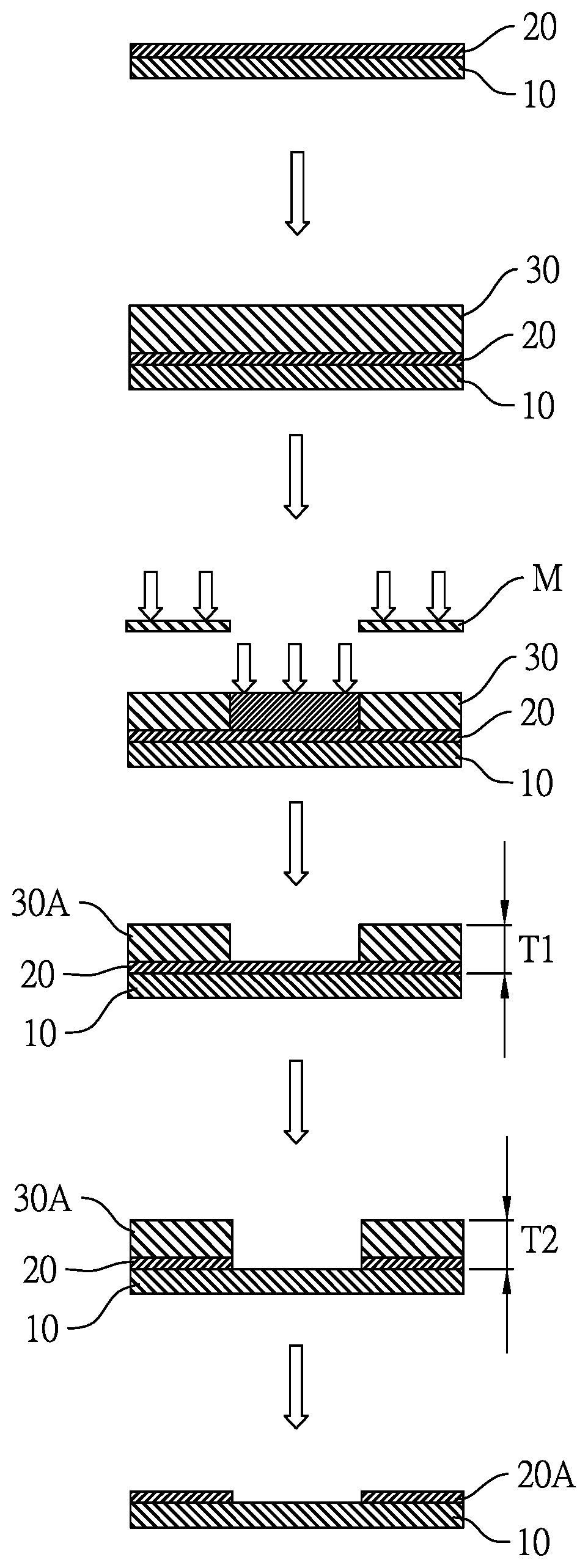Method of forming patterned polyimide layer
a polyimide layer and polyimide technology, applied in the field of photoresist composition, can solve problems affecting the quality of patterned polyimide films, and achieve the effect of improving the chemical resistance enhancing the protective ability of the photoresist layer
- Summary
- Abstract
- Description
- Claims
- Application Information
AI Technical Summary
Benefits of technology
Problems solved by technology
Method used
Image
Examples
Embodiment Construction
[0030]Hereinafter, several embodiments are described to illustrate the implementation of the present invention; one skilled in the art can easily realize the advantages and effects of the present invention from the following specifications. Various modifications and variations could be made in order to practice or apply the present invention without departing from the spirit and scope of the invention.
[0031]Preparing a Positive Photoresist Composition
[0032]Various cresol-type novolac resins, diazonaphthoquinone-based sensitizers (1-phenol-4-(1-(4-(2-(4-(phenol)methyl)phenyl)propyl-2)phenyl)-1-(4-phenolyl phenyl)ethyl)phenyl diazonaphthoquinone derivative), fluorine surfactant (MEGAFAC F-477, purchased from the DIC Corporation) and the organic solvent (2-heptanone) were mixed in the amounts as shown in Table 1 below to prepare the positive photoresist compositions of Examples 1 to 3 and Comparative Examples 1 to 4, respectively. The characteristics of the cresol-type novolac resin us...
PUM
| Property | Measurement | Unit |
|---|---|---|
| temperature | aaaaa | aaaaa |
| temperature | aaaaa | aaaaa |
| temperature | aaaaa | aaaaa |
Abstract
Description
Claims
Application Information
 Login to View More
Login to View More - R&D
- Intellectual Property
- Life Sciences
- Materials
- Tech Scout
- Unparalleled Data Quality
- Higher Quality Content
- 60% Fewer Hallucinations
Browse by: Latest US Patents, China's latest patents, Technical Efficacy Thesaurus, Application Domain, Technology Topic, Popular Technical Reports.
© 2025 PatSnap. All rights reserved.Legal|Privacy policy|Modern Slavery Act Transparency Statement|Sitemap|About US| Contact US: help@patsnap.com

